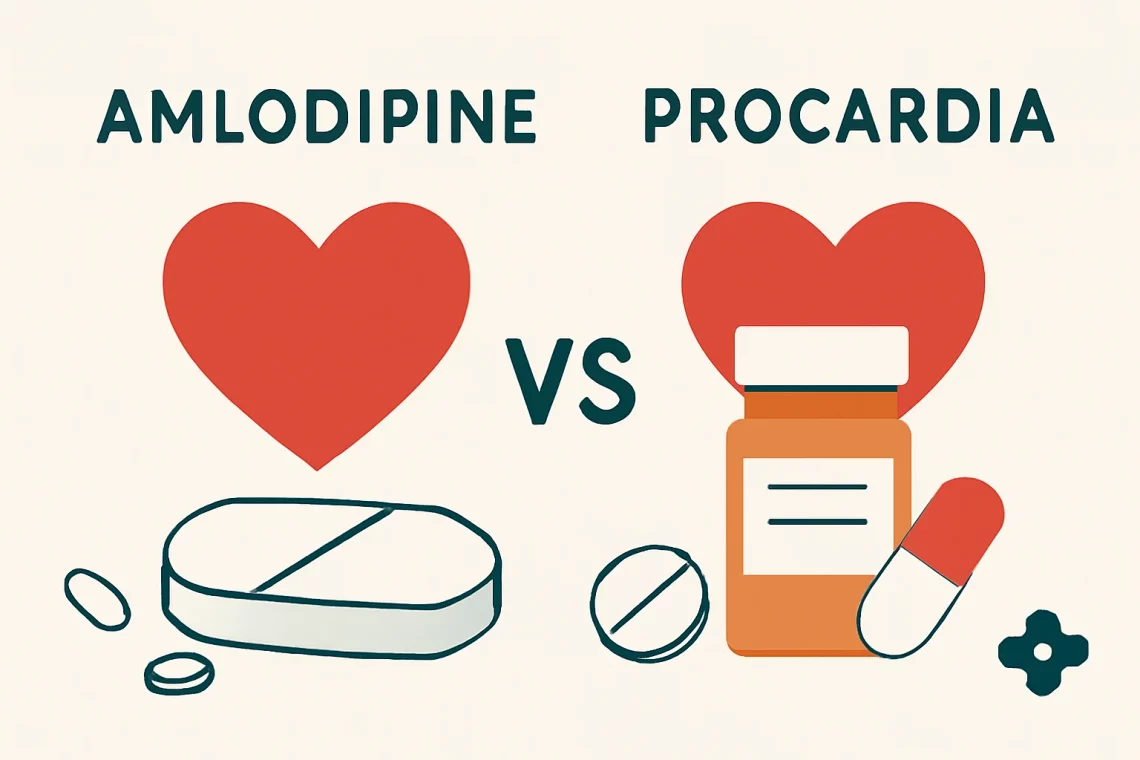
Amlodipine vs Procardia: Key Differences and Similarities Explained
High blood pressure and related cardiovascular conditions are prevalent health issues that affect millions of people worldwide. As medical science evolves, various medications are developed to manage these conditions effectively. Among the most commonly prescribed drugs are Amlodipine and Procardia, both of which belong to a class of medications called calcium channel blockers. These drugs help relax blood vessels, making it easier for the heart to pump blood and thereby reducing blood pressure.
Understanding the differences and similarities between Amlodipine and Procardia can empower patients to make informed decisions about their treatment options. Both medications have distinct mechanisms of action, side effects, and clinical applications. This nuanced understanding can not only enhance patient adherence to prescribed therapies but also improve overall health outcomes.
As we delve deeper into the world of these two medications, we will explore their pharmacological properties, indications, and potential side effects, shedding light on which scenarios might favor one over the other. It’s crucial for patients to engage in open discussions with their healthcare providers regarding their treatment plans, ensuring they receive the most suitable medication tailored to their individual health needs.
Amlodipine: Mechanism and Uses
Amlodipine is a long-acting dihydropyridine calcium channel blocker primarily used to treat hypertension and angina. By inhibiting the influx of calcium ions into vascular smooth muscle and cardiac muscle, Amlodipine promotes vasodilation, which lowers blood pressure and alleviates chest pain associated with angina.
One of the key advantages of Amlodipine is its extended half-life, allowing for once-daily dosing. This aspect can significantly enhance patient adherence, as it simplifies the medication regimen. Amlodipine is often well-tolerated, making it a popular choice among healthcare providers for managing high blood pressure.
Moreover, Amlodipine can be used in combination with other antihypertensive agents, such as ACE inhibitors or diuretics, for patients who require more intensive blood pressure control. In addition to its primary uses, Amlodipine has also shown beneficial effects in certain populations, such as patients with diabetic nephropathy, where blood pressure control is critical to prevent further renal damage.
However, as with any medication, Amlodipine is not devoid of side effects. Common adverse reactions include peripheral edema, flushing, and palpitations. Patients may experience dizziness or fatigue, particularly when initiating therapy or increasing the dose. It is essential for patients to report any unusual symptoms to their healthcare provider, who can then assess the appropriateness of continuing the medication.
Procardia: Mechanism and Applications
Procardia, the brand name for Nifedipine, is another calcium channel blocker that is effective in treating hypertension and angina. Like Amlodipine, Procardia works by relaxing blood vessels, but it has a different pharmacokinetic profile, which can influence its clinical use.
Procardia is available in both immediate-release and extended-release formulations. The immediate-release version is often used for acute management of angina or hypertensive emergencies, while the extended-release form is more commonly prescribed for chronic hypertension management. Due to its rapid onset of action, Procardia can be particularly effective in situations requiring immediate blood pressure reduction.
While Procardia is generally effective, it also has a different side effect profile compared to Amlodipine. Patients may experience flushing, headache, or hypotension, especially with the immediate-release formulation. Reflex tachycardia, a condition where the heart rate increases in response to lowered blood pressure, can also occur, potentially complicating treatment.
Despite these challenges, Procardia can be a valuable option for patients who do not respond well to other antihypertensive medications. It can also be used in combination therapy, particularly for patients with resistant hypertension. As with any calcium channel blocker, it’s crucial for patients to have regular follow-ups to monitor their blood pressure and adjust the medication dosage as needed.
Comparative Analysis: Amlodipine vs. Procardia
When comparing Amlodipine and Procardia, several factors come into play, including efficacy, side effects, and patient adherence. Both medications are effective in lowering blood pressure and managing angina, but their differences can influence treatment decisions.
Efficacy-wise, both drugs are effective calcium channel blockers; however, Amlodipine’s longer half-life often provides more stable blood pressure control over 24 hours, making it a preferable choice for once-daily dosing. In contrast, Procardia may require multiple doses, particularly with the immediate-release formulation, which can complicate adherence for some patients.
Side effects also differ between the two medications. Amlodipine’s common side effect of peripheral edema can be bothersome for some patients, while Procardia may cause more pronounced flushing and reflex tachycardia. Individual patient responses to medications can vary significantly, making it essential for healthcare providers to consider personal medical history and lifestyle when prescribing.
Additionally, both medications can be used in combination with other antihypertensives, but Amlodipine’s favorable tolerability often makes it a first-line option. Understanding these nuances can help patients and clinicians collaboratively choose the most appropriate treatment plan.
Final Considerations and Conclusion
In conclusion, both Amlodipine and Procardia offer effective solutions for managing hypertension and angina. Their differences in pharmacokinetics, side effects, and dosing regimens can influence treatment decisions, emphasizing the importance of personalized medicine in cardiovascular care.
Patients must engage in open dialogues with their healthcare providers to determine which medication aligns best with their health needs, lifestyle, and any other existing conditions. The choice between Amlodipine and Procardia should be made collaboratively, considering each patient’s unique circumstances and preferences.
It is crucial to remember that while this article provides valuable information, it does not substitute for professional medical advice. Individuals should always consult their healthcare providers for specific recommendations tailored to their health needs, especially when considering changes to their medication regimen.




